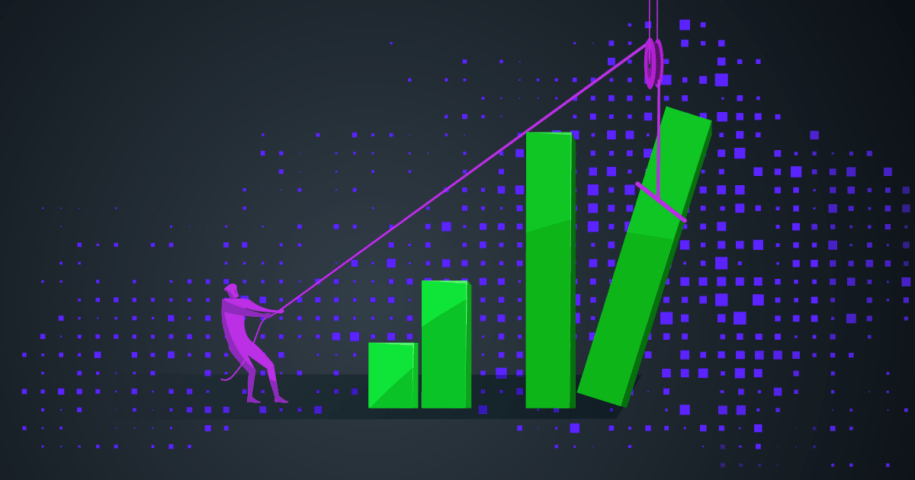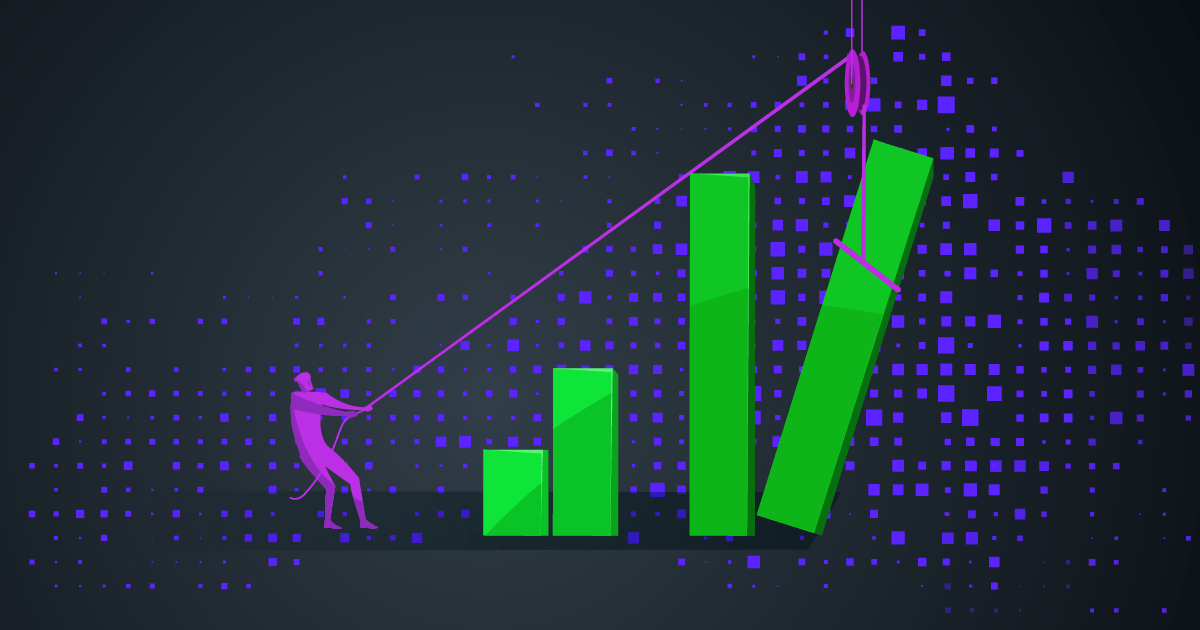Revenera’s annual report on software monetization models and strategies is essential reading for business leaders looking to navigate the complexities of SaaS, cloud, on-premises, and hybrid product lines.
By surveying more than 400 senior executives at global technology companies, we’ve compiled a rich dataset that sheds light on industry trends, best practices, and common roadblocks to revenue growth.
Big talking points from this year’s Monetization Monitor include:
- 88% of respondents now use subscription/term strategies at least moderately across their portfolio. This is a 6% uplift from 2023.
- Overall, only 36% say pricing and value are “totally aligned,” but this jumps to 47% for those using commercial entitlement management solutions.
- Hybrid software monetization models are on the rise, with outcome or value-based (60%) and usage-based pricing (59%) expected to grow by 2026, while 52% also expect traditional perpetual licensing to increase.
- 46% suggest delayed time-to-market is a major barrier to growing Annual Recurring Revenue (ARR), while 33% state customer churn.
You can read the full report for in-depth analysis, but outlined below are some of the key takeaways you should be aware of.
Leading Software Monetization Models
While the continued rise of subscription licensing will come as little surprise to most industry players, the sharp uptick in usage-based and outcome or value-based software monetization models is a noteworthy development.
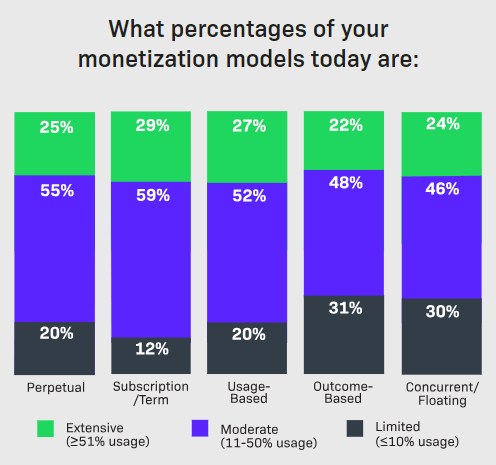
With concepts such as Elastic Access and token-based licensing gaining traction, 80% of companies now report at least moderate use of usage-based models, which is up from 72% last year.
As subscription models are expected to continue showing strong growth, so too are outcome and usage-based models.
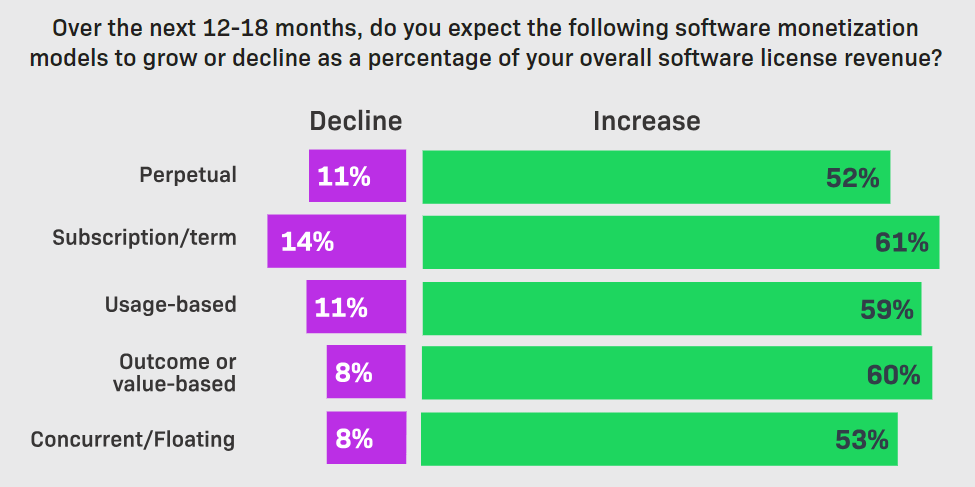
In the digital world, consumers have become accustomed to easy, on-demand access to the products and services they desire, and this appetite has extended to enterprise technology, with users steadily pushing for more flexibility, which has led to producers evaluating how to sell software with pay-as-you-go pricing.
Diversification is the direction of travel, with producers rapidly adopting modern software monetization models to meet market demands. The pace of change suggests those who fail to modify will be left behind, so it’s crucial to listen to customer feedback and adapt accordingly.
However, while new and exciting approaches surge in popularity, the established order remains strong, as 80% still use perpetual licensing at least moderately, and 52% expect perpetual revenues to grow by 2026.
The significance of hybrid strategies is further evidenced when forecasting deployment trends; 61% anticipate SaaS income to grow as a percentage of overall revenue, which is up from 57% last year, while 56% expect on-premises growth – a 10% increase from 2023.
Furthermore, only 10% of respondents believe on-prem deployments will decline over the next 12-18 months, which is notably down from 33% in 2022.
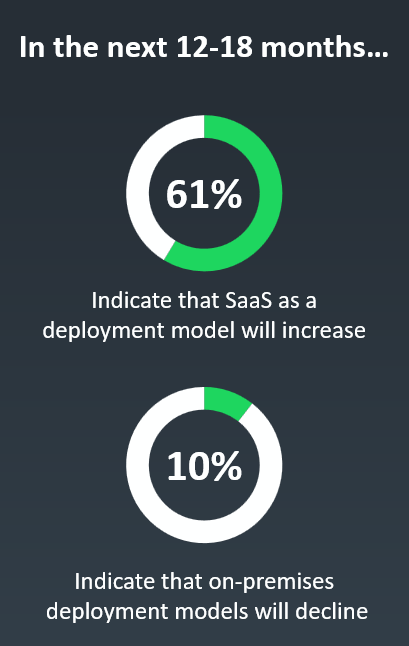
Ultimately, the received wisdom that perpetual, on-premises software monetization models will soon cease to exist is being challenged, with some commentators claiming cloud-first thinking is dead as suppliers become ‘cloud smart’ by recognizing the long-term value of hybrid frameworks.
Download:
Build vs. Buy: A Product Manager’s Guide to Software Monetization Systems
Unifying Hybrid Monetization
The emergence of new commercial strategies coupled with a need to maintain multiple deployments and offer various types of software licensing models has signaled a shift in back-office processes, with 54% of companies now reporting to have consolidated their monetization infrastructure across all product lines, up from 47% in 2023 and 32% in 2022.
By streamlining operations with a centralized entitlement management system, producers are able to support all deployment and software monetization models while also measuring usage, monitoring compliance, and identifying upsell opportunities via a ‘single pane of glass’ that provides complete visibility.
In fact, among those using purpose-built entitlement management technology, 47% are confident in their ability to collect product usage data “very well,” compared to just 28% overall.

Additionally, it seems commercial systems can ease the transition to SaaS, with 85% of users having moved at least some of their on-premises products to SaaS, compared to only 31% who rely on homegrown solutions.
You may be interested in: How to License Software in a Hybrid World
Aside from customer acquisition, a specialized software monetization platform can also help overcome the most common barriers to ARR growth:
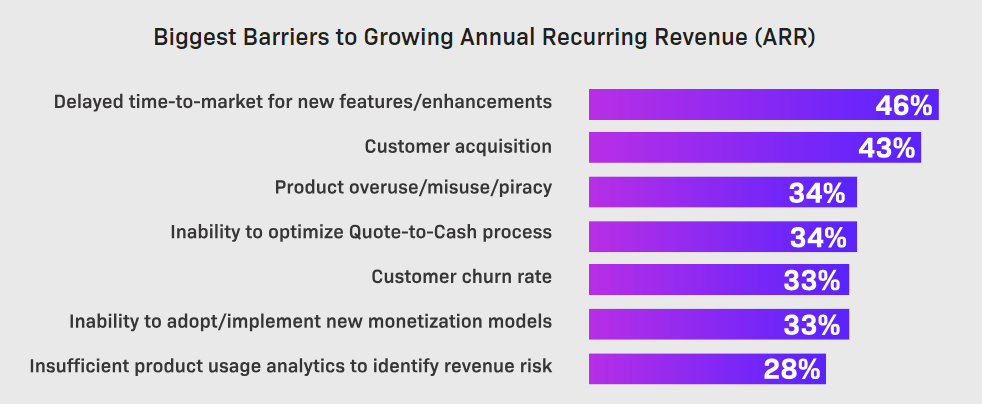
By centralizing operations, you can significantly reduce time-to-market for new features and enhancements, while also having the ability to introduce new software monetization models without additional help from engineering teams.
Advanced usage insights can also help you monitor risk to tackle churn rates, while a streamlined approach can expedite the quote-to-cash process as part of a fully-formed revenue optimization strategy.
Evolving Software Monetization Strategies
According to Greek philosophy, ‘Change is the only constant in life,’ and this surely rings true when it comes to evaluating your software monetization strategy, especially as you consider new dilemmas such as how to monetize AI.
Customer demands continually drive innovation, and producers are rapidly embracing more flexible, pay-per-use software monetization models to stay ahead, while also rationalizing back-office infrastructure to simplify processes and optimize hybrid support – all with the ultimate aim of growing profitability.
For deeper insights, be sure to read the full Monetization Monitor report and please contact us if you’d like to schedule a call to see how Revernera’s state-of-the-art solutions can accelerate your goals.
